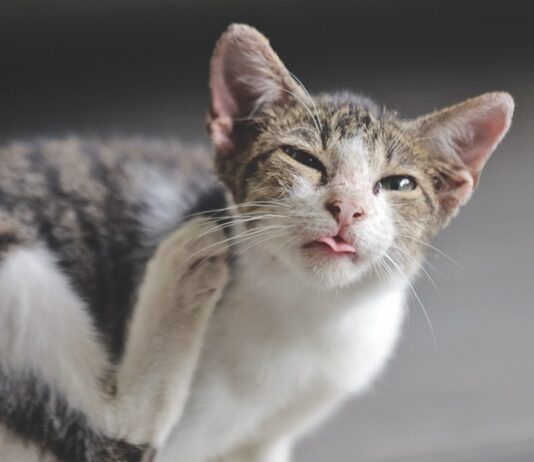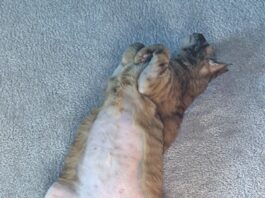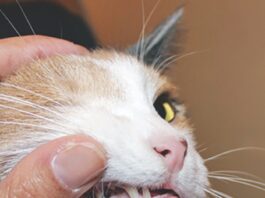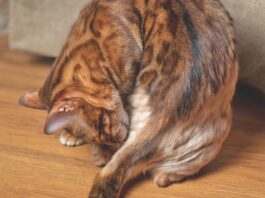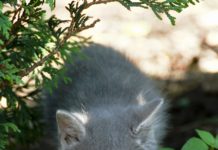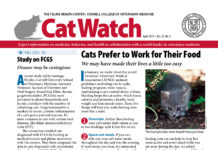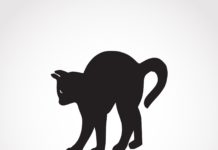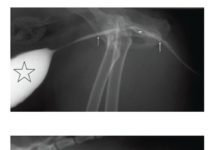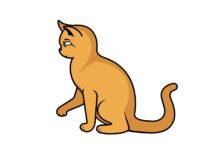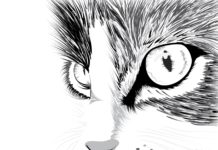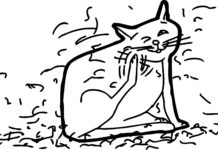How Your Kitty Uses Radar
Your cat has several rows of whiskers, usually 12 arranged in rows, and a few over her eyes. You may also see them along her jawline, near her ears, and on the back of her front legs. All these whiskers, or vibrissae, are stiff tactile hairs that help your cat learn about her environment.
Poor Prognosis: Restrictive Cardiomyopathy
A recent study out of Italy looked at survival and prognostic factors for cats with restrictive cardiomyopathy. The researchers looked at 90 cats who had been diagnosed with this cardiac condition via echocardiography between 1997 and 2015. There were 53 more males than females in the study.
Happening Now…
Angelos Pizza in Matawan, N.J., is delivering more than just food, according to CBS NewYork Channel 2.
Cats Prefer to Work for Their Food
In January, we wrote about the recent American Veterinary Medical Association (AVMA) updated guidelines on feeding cats to make feeding programs more natural, emphasizing a cats natural desire to hunt. Hunting keeps the cat active, which burns calories and promotes a healthy body weight and lean muscle mass. These five things will help you make feeding time more like a hunt.
Download the Full April 2019 Issue PDF
Download the Full April 2019 Issue PDF
Happening now
A 45-year-old Singapore man was arrested for trying to smuggle four kittens past immigration, according to Channel NewsAsia. Security noticed the mans pants were meowing. He faces a possible fine and one year in prison.
Handling Trichobezoars
Many cat lovers know the awful feeling of waking up from a deep sleep to the sound of their cat gagging and retching to throw up a hairball or stepping on a fresh hairball on the carpet with bare feet. Not pleasant! While most hairballs are a nuisance, some can signal or cause serious health problems.
Dangerous Urethral Ruptures
In one large study, slightly over half of the cats that suffered from a urethral rupture had been subjected to direct and intense trauma, primarily by being hit by car and suffering from pelvic injuries. Just under half had experienced a partial rupture while being catheterized for a urinary blockage. Male cats are more commonly afflicted because they are more susceptible to urinary blockages, which may require catheterization, and are more likely to be outside, which increases risk of trauma.
Research Finds Two New Feline Viruses
An article in American Veterinarian says that researchers recently identified two novel viruses in the domestic cat: gammaherpesviruses and feline morbilliviruses. The Felis catus gammaherpesvirus 1 (FcaGHV1) was discovered in 2014, and feline morbillivirus was originally found in 2012.
Acrylic Skull Piece Saves Tabby
Veterinarians at Washington State University used a 3D printer to manufacturer an acrylic skull for a cat needing surgery to address brain tumors, according to a report in the Moscow-Pullman Daily News. The cat, a tabby named Linus, had three tumors removed from the lining of his brain. After the removal of the first two tumors, Linus experienced brain swelling and bleeding, with his brain bulging out of the hole in his skull.
Normal vs Excessive Shedding
Shedding is a normal part of life for mammals-old hairs fall out, allowing new hair to grow in. Animals shed year-round with typically two heavy periods in spring and fall-building up and getting rid of a winter coat, says William Miller, VMD, DACVD, Dermatology Section Chief at the Cornell University School of Veterinary Medicine. During these times of the year, it may seem like there is more hair on the floor than on the cat.
Why Do Cats Eat Grass?
Benjamin L. Hart, DVM, PhD, at the School of Veterinary Medicine at the University of California at Davis, conducted a series of surveys with dog owners on grass-eating behaviors and published an article in the December 2008 Veterinary Medicine. He found that most dogs do not show signs of illness before eating grass and that only 22 percent vomited afterward. As for cats, Dr. Hart said that, Cats typically do not appear to be ill before eating plants nor do they regularly vomit afterward.

